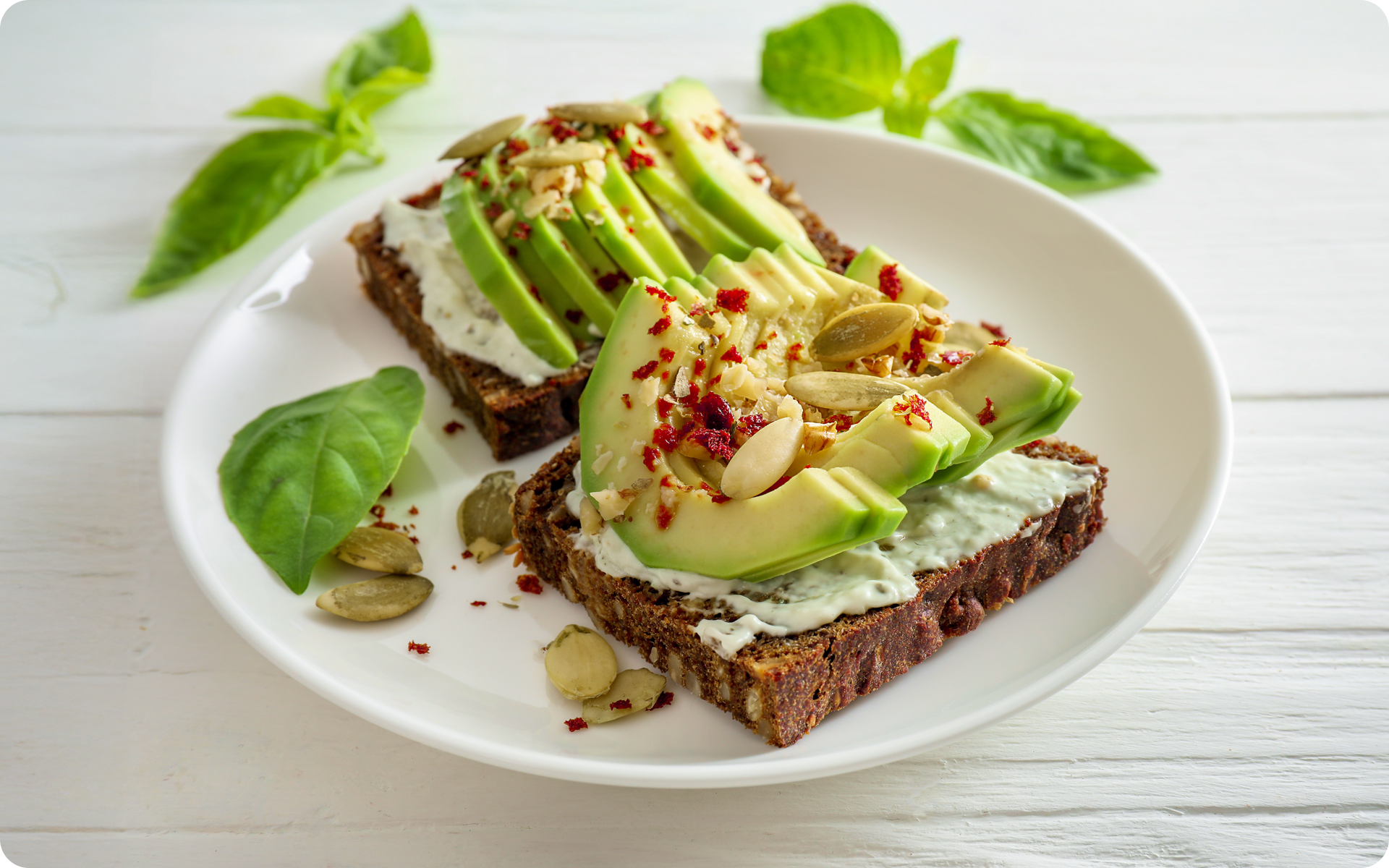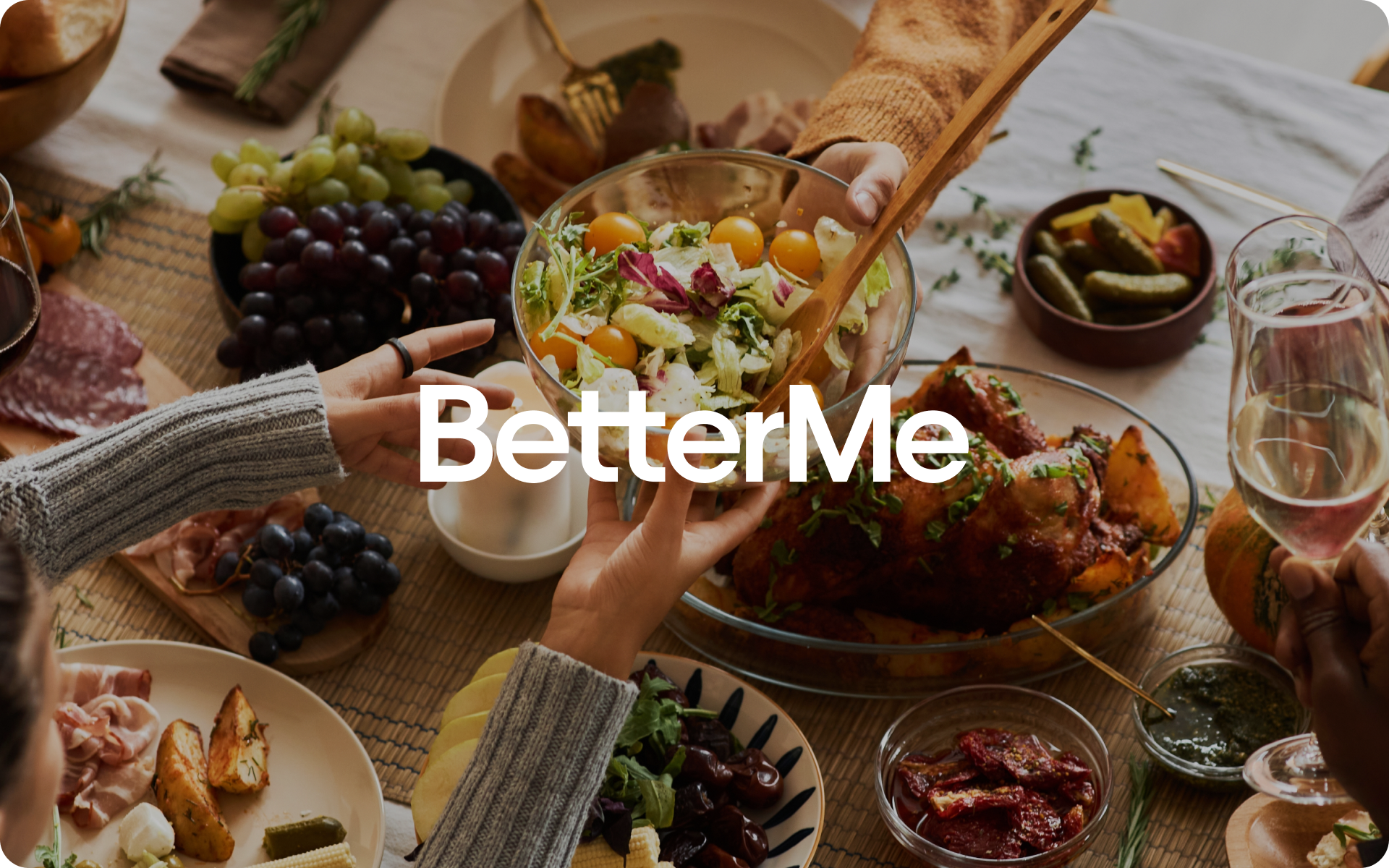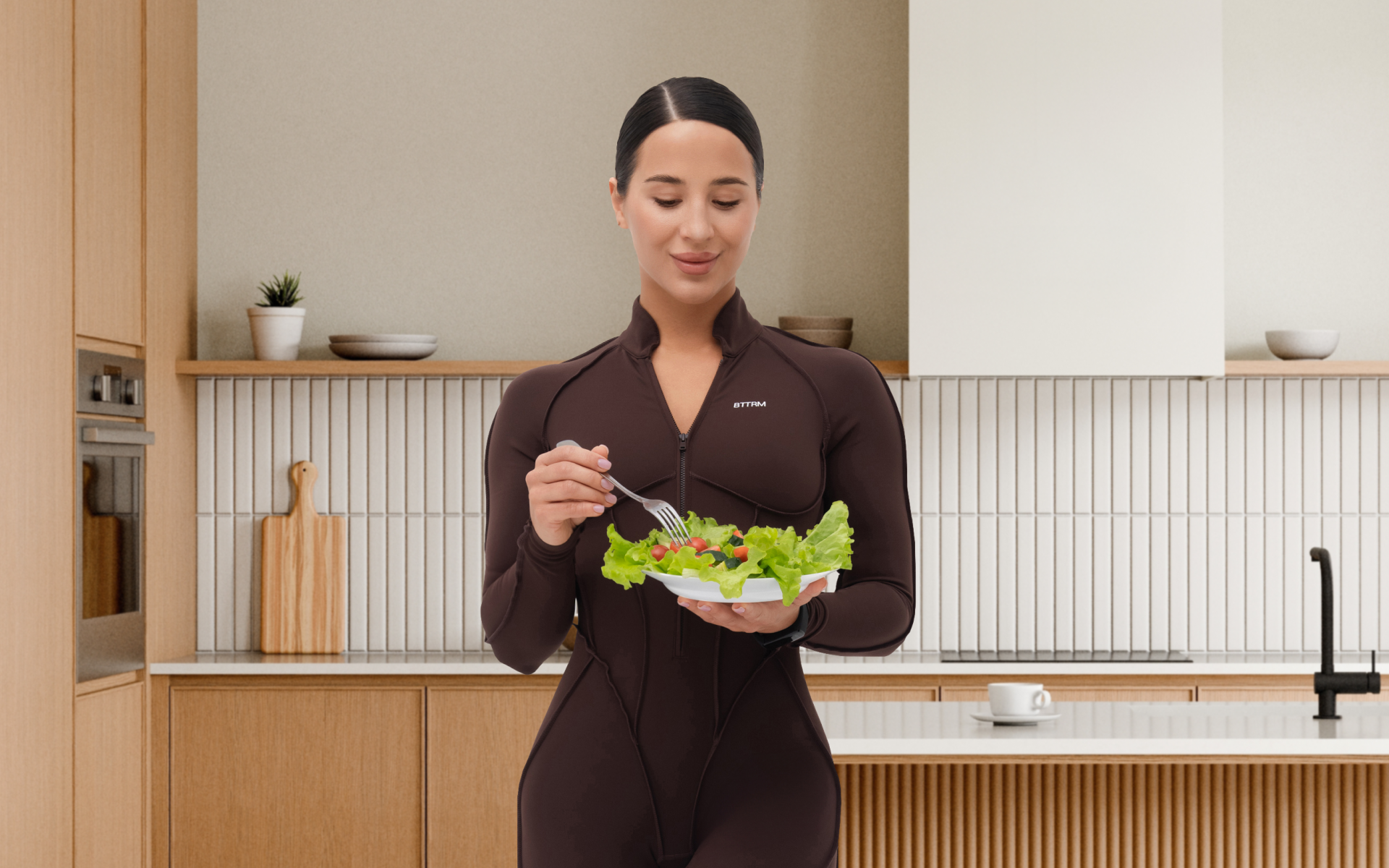Have you ever thought that eating 5 meals a day may be the key to helping you finally lose weight? Most of us believe that having 3 big meals a day with snacks in between is the way to go. After all, that is what many of us grew up doing.
However, some in the fitness and nutrition community believe that increasing the frequency of the times you eat a day could help you finally shed those extra pounds. But is this really true? Is a 5-meals-a-day plan the trick to successful weight loss? Let’s take a closer look at what science says.
What Is a 5-Meals-a-Day Plan?
The definition is in the name. A 5-meals-a-day plan is an eating plan that requires an individual to consume 5 meals during their waking hours instead of the usual 3. Generally, we just consume breakfast, lunch, and dinner – you may have a snack if you feel hungry, but this isn’t required so it’s not counted as a meal.
However, when eating 5 times a day, you consume breakfast, a mid-morning snack, lunch, mid-afternoon snack, and dinner – the two snacks mentioned in this plan aren’t optional and are usually tailored to fit your recommended calorie intake goals.
Please note that
- In order to consume this many meals in a day, you’ll need to try and eat approximately every three hours.
- As with every other meal plan, especially one for weight loss, it’s also highly recommended to be mindful of your calorie intake at each of the 5 meals to ensure you’re not overeating.
Eating 5 Meals a Day for Weight Loss: Is This Possible?
Is 5 meals a day weight loss truly possible as some claim or is the evidence for this largely anecdotal?
When it comes to scientific research on the effects of eating more than 3 meals a day for weight loss, the evidence is rather mixed.
- In a review published in Nutrients in 2019, researchers noted that epidemiological evidence suggests that there is an association between higher meal frequency and lower disease risk, but that intervention studies have found conflicting results (1).
The population-based studies in question suggested that eating 6 or more times a day is associated with a lower concentration of total and LDL cholesterol, in addition to a smaller weight circumference in the subjects. Some also found eating more than 4 times a day to be associated with a lower risk of obesity compared to a frequency lower than three times per day (1).
However, some more intervention-based trials appear to suggest the opposite. For example:
- In a study published in 2015, researchers looking at the effects of meal frequency on fat burning and perceived hunger found that eating more than 3 meals a day may not be as helpful as people believe(2).
In the study, researchers found that eating 6 times a day had the same effects on energy expenditure, respiratory quotient, 24-hour fat oxidation, and feelings of fullness as eating just three times a day.
However, an interesting fact to note was that despite all study participants eating the same number of calories throughout the study, those who ate up to 6 meals a day reported an increased desire to eat. Researchers concluded that changing your diet from 3 meals a day could increase your normal hunger levels as well as your desire to eat (2).
This is not a helpful thing for someone hoping to lose weight as an increase in hunger and/or cravings may lead to an increased calorie consumption.
- In a study published in The Journal of Nutrition in 2017 involving data taken from 50,660 adult Seventh-Day Adventists aged 30 and above found that those who ate 1 to 2 meals a day had relatively lower BMIs compared to those who ate three meals daily. Those who consumed more than 3 meals and snacks a day showed increases in their BMI (1, 3).
As can be seen from these two studies and the larger study review mentioned above, there is currently no consensus regarding whether eating more than 3 meals a day can help you lose weight or not. If you choose to eat more than three times a day, say up to 5 meals a day or more, it’s suggested that you (1):
- Choose your snacks wisely – Higher-calorie snacks may increase your overall calorie intake and make it more difficult to lose weight.
- Keep your eating patterns regular – This means you should try and eat at the same time every day. Comments in the study say that a regular meal pattern has potential positive effects on health outcomes regardless of meal frequency.
Our previous post goes into great detail about how often should you eat to lose weight.
What Should I Eat for a 5-Meals-a-Day Diet Plan Menu?
An important fact to note is that consuming 5 meals a day doesn’t mean filling up on snacks alone. You need to eat regular, well-balanced meals to lose weight and make sure you’re getting all the necessary nutrients an adult requires.
Some healthy weight loss foods that should be included in your 5 meals a day for weight loss are:
- Leafy greens such as collard greens, swiss chard, kale, and spinach
- Fish such as salmon, tuna, cod, trout, sardines, and mackerel
- Lean beef, eggs, and skinless chicken breast
- Vegetables such as broccoli, cauliflower, carrots, cabbage, and green beans
- Beans, peas, lentils, and legumes
- Whole grains such as barley, brown rice, buckwheat, bulgur (cracked wheat), millet, oatmeal, and popcorn
- Whole-wheat bread, pasta, or crackers
- Berries and other fruits – raspberries, blackberries, strawberries, cranberries, and grapes.
- Nuts – pistachios, walnuts, cashews, almonds, pecans, and hazelnuts
- Avocados for healthy fats
- Healthy oils such as olive, safflower, hemp, flaxseed, canola, and sunflower oil
To learn more about meal plans to lose weight, check out our in-depth article on the topic.
In addition, some more points to remember when making your 5-meals-a-day diet plan for weight loss are:
-
Find Your Recommended Calorie Deficit
To lose weight, you need to eat less energy (calories) than you expend each day. In a review published in the Journal of Obesity & Metabolic Syndrome in 2021, researchers stated that an energy deficit is the most important factor for weight loss and weight loss maintenance (4). This means that regardless of the type of diet you choose, i.e. low carb, high protein, keto, veganism, Mediterranean, no diet will work for weight loss if you eat more calories than required.
We suggest using an online calculator or a reputable fitness app to calculate your calorie deficit. We suggest the BetterMe App as you calculate your deficit with it and you can also input and track your exercise and meal plans.
-
Eat a Balance Diet
There are so many weight loss diets to choose from that you can be easily confused and misinformed into making bad decisions. If you don’t know where to start, the easiest thing to do is to eat a simple balanced diet. Such a diet recommends (5)
- Consuming the majority of your carbohydrates from whole grains
- Eating at least five servings per day of fruits and vegetables
- Consuming moderate amounts of dairy and lean meat products, and more fish and plant-based protein
- Limiting the consumption of foods that are high in saturated fat or added sugar
-
Exercise
When it comes to measures for weight loss, it’s important to remember that diet alone isn’t the only determinant. Exercise also plays a huge role in how quickly you lose weight.
By working out, you help your body burn more calories, which can help quicken the process. Make sure to exercise three to five times a week for at least 30 minutes a day. Combine both cardio and weightlifting exercises for the best results.
Sample of a 5-Meals-a-Day Diet Menu
If you are looking for some 5-meals-a-day examples, here’s a one-day meal plan menu that can help guide you decide what and how to eat while following such an eating plan. Depending on your individual calorie goal, you may need to increase the serving sizes to meet your needs.
One-Day 5-Meals-a-Day Plan Menu
Breakfast – Spaghetti Squash Egg Cups
350g spaghetti squash, 2 tsp cooking oil, 25g green onions, 1 large egg white, 1/4 teaspoon salt, black pepper, to taste, 1/4 cup all-purpose flour, 1/2 cup shredded cheddar cheese, 8 large (50g each) eggs.
These measurements make 4 egg cups. A serving is 2 egg cups
Cals: 288, Fat: 18 g, Carbs: 13 g, Protein: 19 g
Snack – Pumpkin Spice Roasted Chickpea Trail Mix
1 can chickpeas, 1 teaspoon pumpkin pie spice, 5 to 6 drops of stevia, 1/2 cup unsweetened large flaked coconut flakes, 1/2 cup almond slices, 1/4 cup mini chocolate chips.
Cals: 155, Fat: 7 g, Carbs: 18 g, Protein: 16 g
Lunch – Harvest Salad with Chicken
30g greens, 30g romaine lettuce, 2 tablespoons red onion, 8 pecan halves, 1/4 apple thinly diced, 2 tablespoons dried tart cherries, 40g cucumber, 2 tablespoons gorgonzola cheese.
This makes two servings.
Dressing (8 servings) – 1/2 cup extra virgin olive oil, 1/4 cup balsamic vinegar, 1/4 cup plain 1% kefir, 1/4 cup water, 1 teaspoon agave nectar, 1/4 teaspoon pumpkin pie spice.
Cals: 352, Fat: 23 g, Carbs: 18 g, Protein: 20 g
Read more: Weight Gain Recipes – The Delicious and Healthy Way
Snack – Apple Pie Oat Muffins
2 cups oats, 1 teaspoon baking powder, 2 teaspoons apple pie spice, 1/4 teaspoon salt, 1/2 cup applesauce, 1 medium apple, 1 large egg white, 1/4 cup maple syrup or honey, 2 teaspoons pure vanilla extract, 1 cup unsweetened vanilla almond milk, 1/3 cup dried cranberries.
The above measurements are enough for 12 muffins. One muffin = one serving
Cals: 100, Fat: 1 g, Carbs: 20 g, Protein: 3 g
Dinner – Turkey Sausage, Kale, and Sweet Potato Soup
1 tbsp olive oil, 1 1/2 cups chopped yellow onion, 1 large sweet potato, 13 oz cooked turkey sausage, 4 cloves garlic, 6 cup low-sodium chicken broth, 1 tsp paprika, 1 tsp ground cumin, 3/4 tsp ground coriander, 1/4 tsp chili powder, salt and freshly ground black pepper, 4 cups chopped fresh kale, 1 can dark red kidney beans.
The above measurements make 6 servings
Cals: 317, Fat: 9 g, Carbs: 37 g, Protein: 16 g
Total calorie intake for the day: Cals: 1,212, Fat: 58 g, Carbs: 106 g, Protein: 64 g
Please note: This sample diet plan is only approximately 1,200 kcal. This is the lowest recommended calorie intake for an adult, which means you shouldn’t be tempted to eat less than this. If your recommended deficit is above 1,200 calories, feel free to have an extra portion or half portion to reach your deficit. As with overeating, undereating is not recommended for weight loss.
This meal plan also happens to be fairly low in carbohydrates and high in fat – if that doesn’t match your preferred eating style, feel free to adjust it as desired. For example, you can add a serving of whole grains to your salad, have a slice of whole-wheat toast with your egg cups, or make some crusty croutons to go with your soup.
How to Eat 5 Meals a Day For Weight Loss
If you want to start eating 5 meals a day for weight loss, here are some tips to make the process easier, healthier, and wholesome for you:
Determine Your Daily Energy Requirements
As stated above, weight loss requires a calorie deficit. Use the above-mentioned tips to find out your calorie goal based on an appropriate deficit. A calorie deficit that is achieved through reduced calorie intake as well as exercise can help you lose 1 to 2 pounds a week, which is a healthy and sustainable weight loss pace (6).
Lean and toned up body isn’t just a far-fetched fantasy. Check out the BetterMe: Health Coaching app and watch it propel your weight loss journey into high gear!
Plan Out Your 5 Meals a Day
Once you’ve determined how many calories you need to eat a day to lose the extra pounds, divide this number by 5 to determine the approximate number of calories each meal should have. For example:
- For 2,000 cals a day, each meal should be about 400 cals
- 1,500 cals a day = 300 cals per meal
- 1,200 cals a day requires approximately 240 cals per meal
Remember that each meal doesn’t have to be exactly 240, 300, or 400 calories. If it surpasses or goes over the recommended number, it’s still fine – you can correct this in the next meal. Just make sure that at the end of the day, the final tally is around your total daily recommended intake.
Don’t Undereat
Contrary to popular opinion, eating as little as possible won’t quicken your weight loss efforts. Not only will undereating lead to nutritional deficiencies and lack of energy, it can also cause the body to hold on to stored fat. When you deprive the body of sustenance, it may think you’re starving and conserve energy in an effort to save your life. So eat, but keep it within the recommended deficit and you’ll be fine.
Meal Prep
Lack of planning and preparation is among the biggest reasons why many people are unable to stick to their diets. Due to our busy lives, it’s sometimes impossible to have time to cook every day. This leads us to convenient fast food options or ordering from restaurants. You can easily go over your calorie intake eating like this all the time.
Instead, choose a day of the week – Saturday or Sunday or whatever day you have time – where you can prepare and portion out all the meals and snacks that you’ll consume during the week. In this way, even when you are in a hurry, you already have healthy nutrient-dense food within your allocated caloric intake target.
Work Out
As mentioned above, working out helps burn more calories, which will lead to faster weight loss. Remember that exercise doesn’t always involve the gym.
Choose to take a walk instead of taking an Uber, opt to take the stairs rather than the elevator, get up and do some squats at each commercial break, etc.
Always have a meal or snack before your workout to give you energy and then some time after exercising to help repair your muscles and replenish the energy you’ve lost.
5 Meals a Day: How Many Calories Should I Eat?
This depends on what your goals are. According to the Dietary Guidelines for Americans 2020 – 2025, adult women require between 1,600 to 2,400 calories a day, while adult men need to consume anywhere between 2,000 kcal to 3,000 kcal a day (7).
However, these numbers aren’t set in stone. Age, size (height and weight), and amount of physical activity done in a day determine how many calories you should ingest on any given day for weight loss, gain, or maintenance.
What this means is that a weight loss 5-meals-a-day plan is going to look very different from a 5-meals-a-day plan to build muscle. A person who is eating for weight loss will need to eat at a deficit while a person who is looking to build muscle will need to eat at a caloric surplus.
Due to all these factors, we can’t tell you how many calories you should be eating a day. However, imputing your goals, current weight and other individual factors to a reputable calorie counter can easily help you determine this.
Read more: Ice Hack for Weight Loss – Does it Work?
What Time Should I Eat My 5 Meals a Day?
As advised in the study mentioned above (1), maintaining a regular meal pattern has potential positive effects on health outcomes regardless of meal frequency. When eating 5 times a day, you can space out your meals by 2 to 3 hours. An example of having 5 meals a day every three hours would be as follows:
- Breakfast – 07:00
- Snack/2nd breakfast – 10:00
- Lunch – 13:00
- Snack – 16:00
- Dinner – 19:00
Why Is it Important to Eat 5 Meals a Day?
As mentioned above, some studies have shown that eating more than three times a day can help lower your total and LDL cholesterol, reduce the risk of obesity and type 2 diabetes, and even reduce your waist circumference, although other studies have found conflicting results (1).
Research also suggests that for athletic individuals, eating more frequently can actually help preserve muscle mass when eating at an energy deficit for weight loss (8). As an athlete, make sure your meals are higher in protein as this macronutrient can help with muscle building, faster recovery, and improved performance (9).
Protein is also good for weight loss as it helps to slightly increase your metabolism, makes you feel full for longer, and helps with muscle building, particularly if you’re working out (10).
Are There Any Cons to Eating 5 Meals a Day?
Yes, there are. As mentioned above, other studies have suggested that eating more than 3 times a day can lead to an increase in BMI and may increase hunger as well as the desire to eat, which can lead to overeating and over-snacking and affect your weight loss efforts (1, 2, 3).
Looking for a way to break the vicious cycle of weight loss and tone up all the jiggly parts? Watch the extra pounds fly off and your muscles firm up with the BetterMe: Health Coaching app!
FAQs
Is it possible to eat 5 times a day?
Yes, it is. As long as you structure your meals well, you can certainly eat 5 meals or more in a day.
Is it good to eat 5 meals a day?
As seen above, research in this area is quite divided. While some studies suggest that there may be benefits to eating more frequently, others suggest that it could contribute to weight gain.
Will I lose weight if I eat 5 times a day?
The answer depends on who you ask. As stated, the science on this matter is quite divided – some suggest that a person might lose weight, while others suggest the opposite due to the potential to trigger increased hunger and a desire to eat. The true answer to ‘how many times should you eat to lose weight?’ seems to be one that is based on personal preference rather than a scientific answer.
The Bottom Line
Will having 5 meals a day help with weight loss? Due to conflicting findings, only personal experience can say whether this will work for you or not.
However, what we can suggest is that whether you’re having three or five meals or more a day, ensure that you always eat at a calorie deficit if you want to lose weight. This is the most important factor for weight loss, regardless of meal frequency.
If you can, make sure to also include exercise or simply work more movement into your daily routine.
DISCLAIMER:
This article is intended for general informational purposes only and does not serve to address individual circumstances. It is not a substitute for professional advice or help and should not be relied on for making any kind of decision-making. Any action taken as a direct or indirect result of the information in this article is entirely at your own risk and is your sole responsibility.
BetterMe, its content staff, and its medical advisors accept no responsibility for inaccuracies, errors, misstatements, inconsistencies, or omissions and specifically disclaim any liability, loss or risk, personal, professional or otherwise, which may be incurred as a consequence, directly or indirectly, of the use and/or application of any content.
You should always seek the advice of your physician or other qualified health provider with any questions you may have regarding a medical condition or your specific situation. Never disregard professional medical advice or delay seeking it because of BetterMe content. If you suspect or think you may have a medical emergency, call your doctor.
SOURCES:
- The Influence of Meal Frequency and Timing on Health in Humans: The Role of Fasting (2019, ncbi.nlm.nih.gov)
- Effects of Increased Meal Frequency on Fat Oxidation and Perceived Hunger (2015, ncbi.nlm.nih.gov)
- Meal Frequency and Timing Are Associated with Changes in Body Mass Index in Adventist Health Study 2 (2017, pubmed.ncbi.nlm.nih.gov)
- Optimal Diet Strategies for Weight Loss and Weight Loss Maintenance (2021, ncbi.nlm.nih.gov)
- Weight-Loss and Maintenance Strategies (n.d., ncbi.nlm.nih.gov)
- Steps for Losing Weight (2023, cdc.gov)
- Dietary Guidelines for Americans 2020 – 2025 (n.d., dietaryguidelines.gov)
- International Society of Sports Nutrition position stand: meal frequency (2011, jissn.biomedcentral.com)
- Effects of Protein Supplementation on Performance and Recovery in Resistance and Endurance Training (2018, ncbi.nlm.nih.gov)
- Protein, weight management, and satiety (2008, ajcn.nutrition.org)















